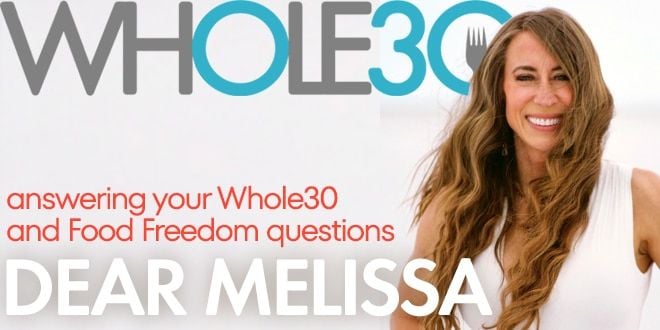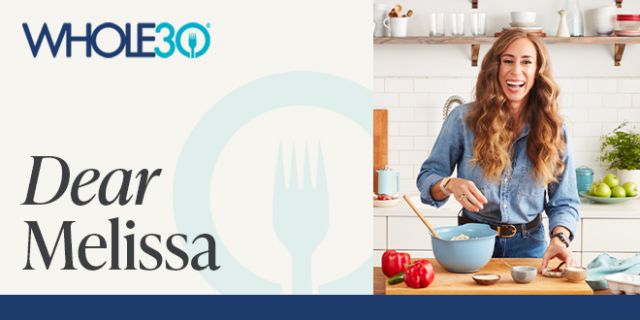By Whole30 co-founder Melissa Urban, who only drinks decaf but still knows a thing or two about good coffee.
One of the most common realizations when someone does their first Whole30 is, “I drink so much more coffee when I can add sugar.” (Do you really need that second cup, or are you just craving the sugar hit?) Many people credit the Whole30 with an increase in energy, better sleep, and less reliance on coffee—all huge non-scale victories! But I get it—you might be sad at the idea of drinking straight black coffee for thirty straight days. Here are some tips for making coffee great again, Whole30-style.
Buy better coffee
I cannot stress this enough—the beans make a huge difference in your overall coffee experience. The beans you buy can make your morning pick-me-up smooth and rich—or bitter and caustic. Buy whole beans, not pre-ground. Make sure they’re in a bag, not a giant bulk bin, as you have no idea how long those beans have been sitting there. Ideally, choose beans with a posted roast date within the last two weeks. Also look for origin transparency—roasters that share their sourcing practices, sustainability efforts, and farmer partners. You’ll have your best luck shopping at a local coffee shop, from a local coffee roaster, your neighborhood health food store, or an online roaster.
Grind it yourself
Ideally, grind it fresh each morning, as experts say coffee begins to lose its flavor within 30 minutes of being ground. If you choose to pre-grind it all, store it on the counter in a vacuum-sealed canister. (In a pinch, the bag it came in will do.) Don’t put your coffee in the freezer, as that can damage the flavor and aroma! Make sure to grind it according to your method of brew—a French press (my preference) requires a coarse grind, while a coffee maker requires a fine grind. If you don’t have a grinder at home and don’t want to invest in one, your local coffee roaster can grind it for you fresh after your purchase.
Brew it fresh each morning
I use a French press, which is easy, fast, and results in a great cup of coffee every time. If you can, use filtered water (from a Brita or your fridge). I boil water in an electric kettle, then let it sit for 30 seconds to cool it down slightly. (Water that exceeds 205 degrees can “burn” the coffee, so unless you want to get super geeky and use a thermometer, estimate by waiting 30 seconds after boiling to pour.) While my water is heating, I’ll grind my coffee and add the grounds to the bottom of the press. Then I’ll fill the press with hot water, and stir gently with a wooden spoon to ensure all the grounds are soaked. Once the lid is back on, I set a kitchen timer for four minutes. When the timer goes off, I press the top down slowly, then pour. I usually pour the entire press into an insulated bottle to keep it hot and avoid the bitterness that can happen when the brewed coffee sits with the grounds for too long.
Note: There are formulaic ratios for water to coffee grounds based on your method of brewing, which you can Google as a starting point. I know five heaping scoops in my French press makes a strong cup of coffee, just how I like it. Experiment to determine the right amount of coffee for you.
Add a Whole30-compatible creamer
If you’ve followed all my steps so far, your black coffee is now tasting 82% better than the stuff you used to drink. However, we can level you up even more. While you can’t add sugar in any format, you can make your coffee extra creamy-dreamy with a compatible Whole30 Approved creamer. One community favorite is nutpods, with unsweetened flavors ranging from French Vanilla to Toasted Marshmallow. Or try Bubs MCT Oil Powder, using an electric frother to combine—the longer you froth, the creamier it becomes. You can also use Whole30 Approved almond milk from New Barn or Malk for a lighter touch.
Cinnamon, nutmeg, vanilla, and… salt?
Some Whole30’ers get even fancier, adding spices like cinnamon, nutmeg, cardamom, or vanilla bean powder to their ground beans before brewing. Also—hear me out—consider adding a small amount of LMNT Raw Unflavored electrolytes to your cup, too. Salt can enhance your brew’s sweetness and cut back on any lingering bitterness. In fact, according to food scientist Alton Brown, research has proven that salt is actually better at neutralizing bitterness than sugar! I add LMNT to all of my decaf brews.
Order with caution
If you’re ordering at a coffee shop or restaurant, make sure their dairy-free milks are unsweetened before ordering a latte or a flat white. (Spoiler: They’re almost always sweetened, which is a real bummer.) Also remember that any flavored syrup is out, as they all contain sugar or artificial sweeteners. Instead, order a black coffee or an Americano, which is just espresso and water, and BYO compatible creamer from home.
With these tips, I’m certain that your Whole30 coffee will be far more delicious even without the milk and sugar. I hope you’ll come to love this version of coffee just as much as I did during my first Whole30.
Best in health,
Melissa














